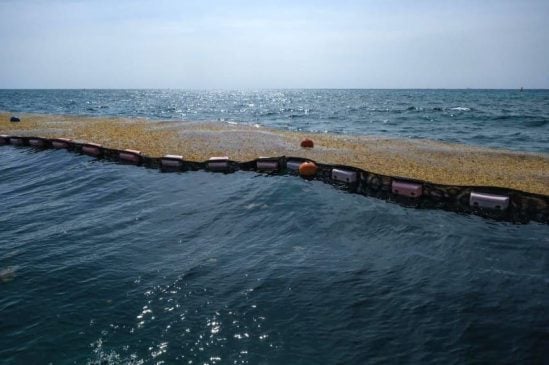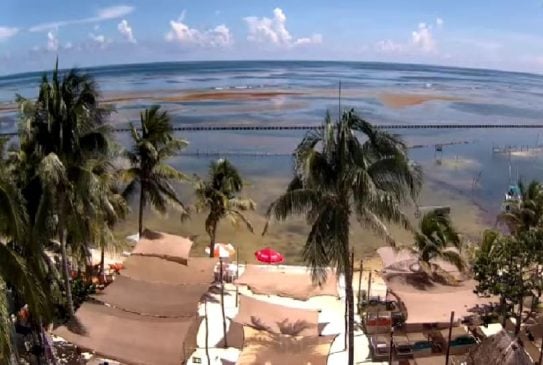Riviera Maya, Q.R. — More than 60 scientists have set sail for a two week research project to study Mexico’s sargassum. The Mexican government seeks to mitigate the negative effects of sargassum on the coasts and transform it into a useful resource through scientific knowledge.

The group of scientists set sail from Cozumel May 29 on the Fisheries and Oceanographic Research Vessel Dr. Jorge Carranza Fraser for 14 days to unravel the mysteries of pelagic sargassum in the Mexican Caribbean.
The participating researchers are from national institutions. The Ministry of Agriculture and Rural Development, through the Mexican Institute for Sustainable Fisheries and Aquaculture Research (IMIPAS), is promoting the oceanographic research cruise.
The cruise is in coordination with other Mexican government agencies to evaluate and exploit pelagic sargassum (Sargassum spp.) in the Exclusive Economic Zone of the Mexican Caribbean.
During the 14 days of continuous navigation in the Mexican Caribbean, specialists will travel more than 3,500 kilometers to study pelagic sargassum, a brown algae that floats on the ocean’s surface, in what represents the first project of this magnitude internationally.
The project is made possible with support from the Inter-American Development Bank, an international organization that promotes sustainable development in Latin America and the Caribbean. The scientists are carrying out the project on Dr. Jorge Carranza Fraser Fisheries and Oceanographic Research Vessel, one of the most modern in the world equipped with cutting-edge technology.
Since 2011, massive influxes of sargassum have been recorded in the Caribbean Sea. In 2014, it began arriving continuously in the Mexican Caribbean, affecting nearly 900 kilometers of coastline and reaching volumes of up to two cubic meters per linear meter of beach.
Although sargassum provides habitat benefits for various species on the high seas, its massive accumulation along coasts has had negative impacts on human health, coastal ecosystems and economic activities such as fishing and tourism.

Faced with this challenge, IMIPAS proposes a new approach: harnessing sargassum as a fishery resource, which requires a thorough understanding of its environment and biomass to enable its identification and capture on the high seas, before it reaches the beaches.
To achieve this, more than 60 researchers from the National Autonomous University of Mexico, the Autonomous University of Baja California, the University of the Sea , and the University of Costa Rica will participate. Other researchers from the Centers for Research and Advanced Studies, the Interdisciplinary Center for Marine Sciences, the Center for Biological Research of the Northwest, and the Interdisciplinary Center for Research for Integral Regional Development are also on board.
Scientist from the Institute of Ecology, Fisheries and Oceanography, the Institute of Technology of Tepic, the College of the Southern Border and researchers from Mexico Secihti, are also involved.
Researchers into to sample the sargassum to determine the species that compose it, their volumes, their chemical composition, and the presence of heavy metals and microplastics.
The will also sample the fauna that accompanies the sargassum, from fish, mollusks, crustaceans and even plankton, take aerial photographs to characterize the sargassum rafts and sample marine water to determine nutrients, heavy metals and other contaminants.

Other project will include studies on ocean acidification, which will also help understand its impact on Caribbean corals and analysis of environmental DNA, i.e. genetic material from organisms associated with sargassum.
With the collaboration of specialists, research centers, and cutting-edge technology, the goal is to generate multiple lines of research for the sustainable use of sargassum.


